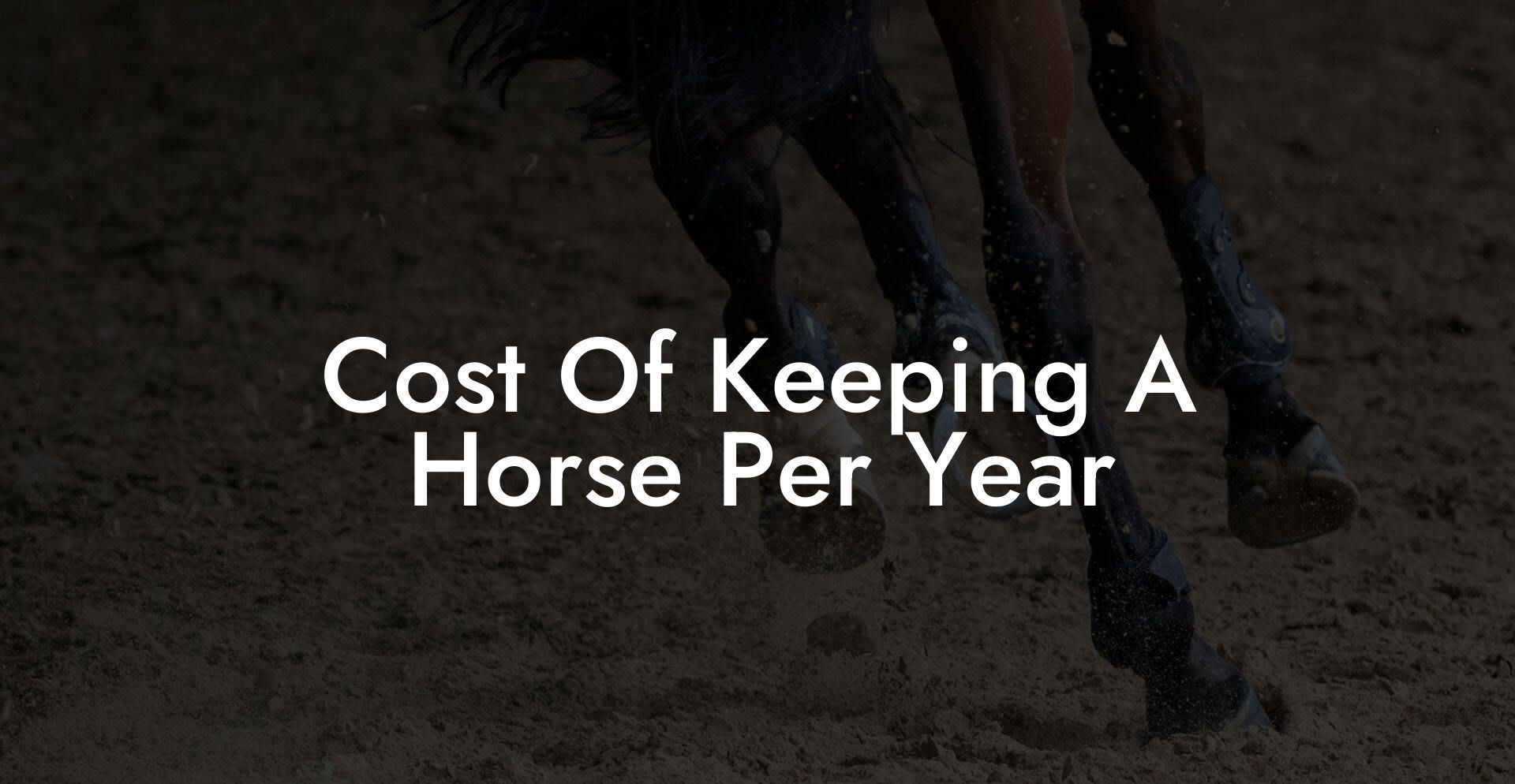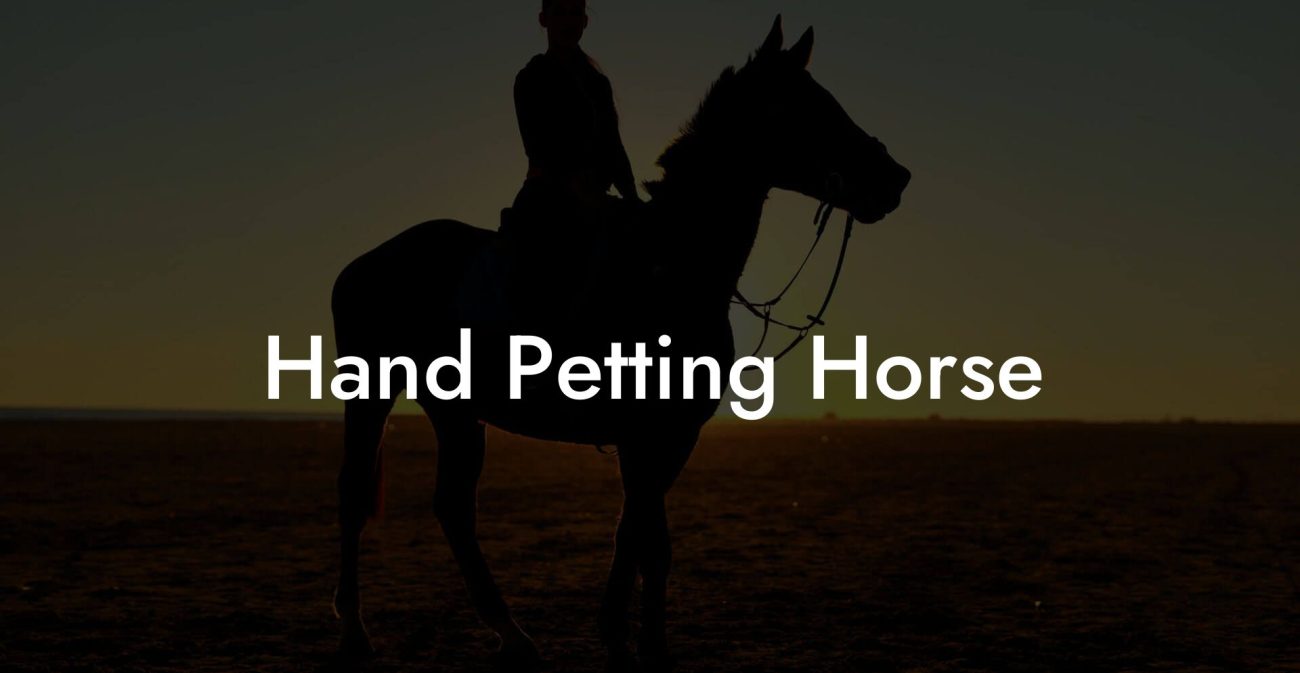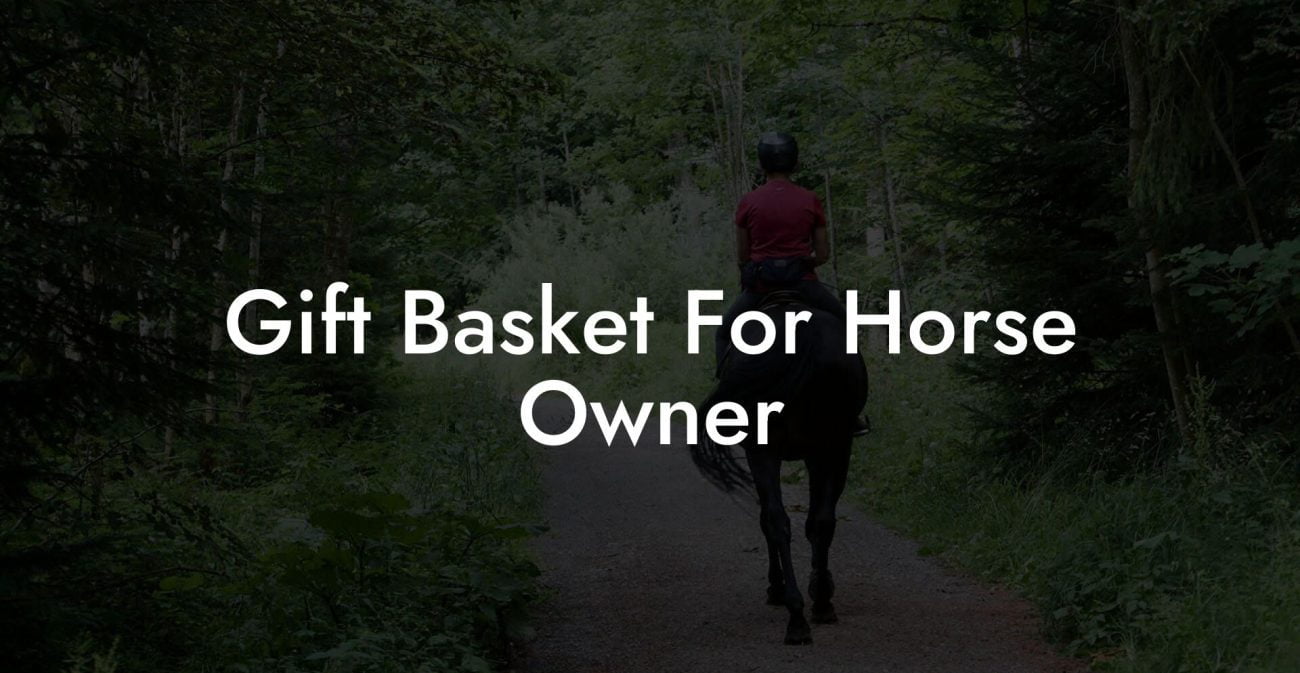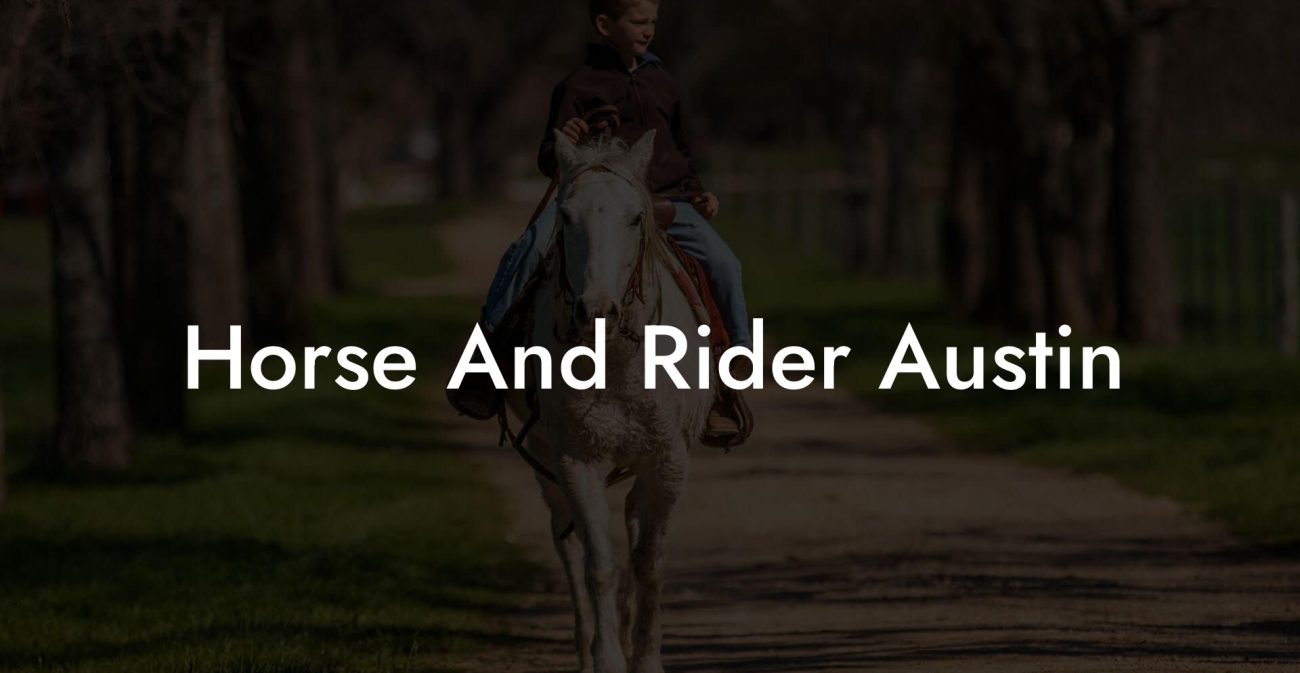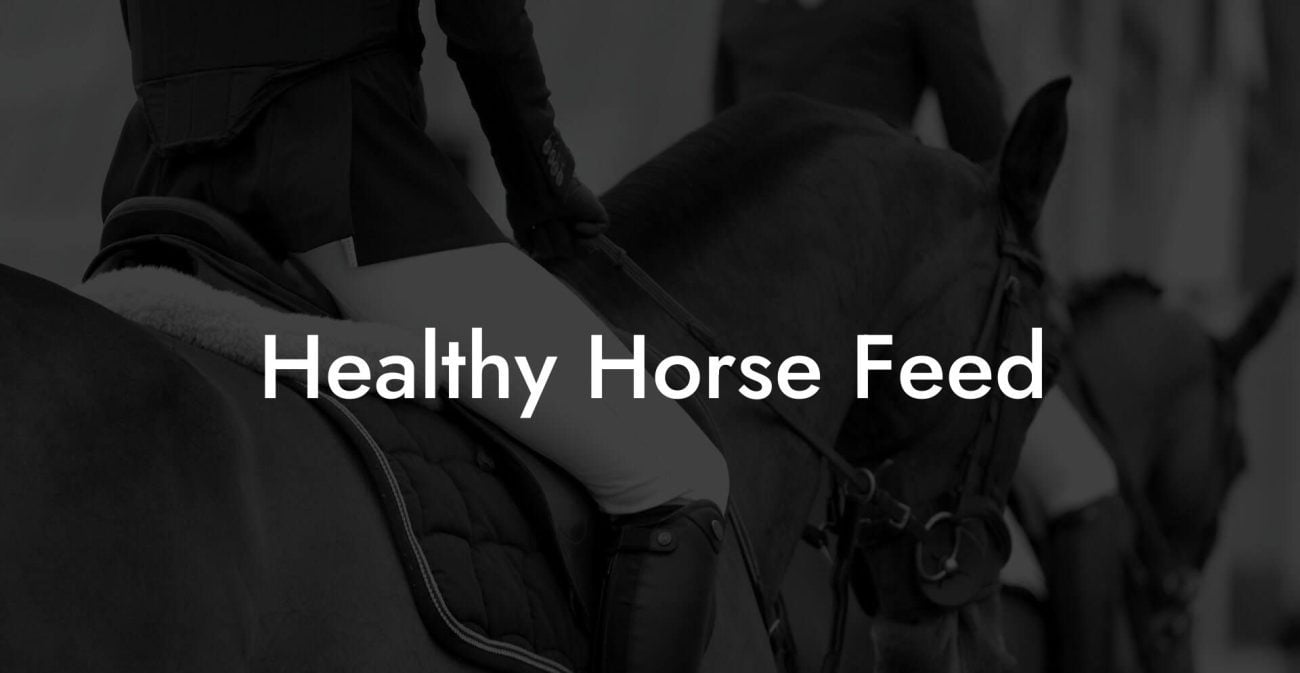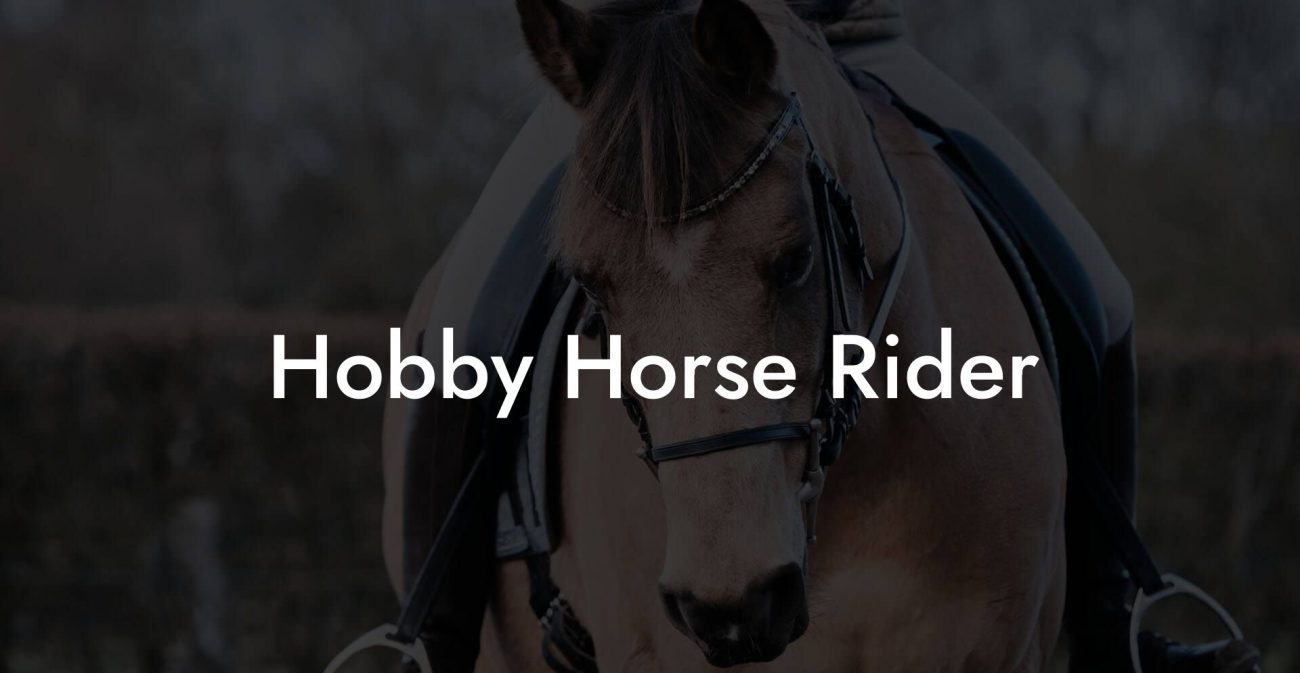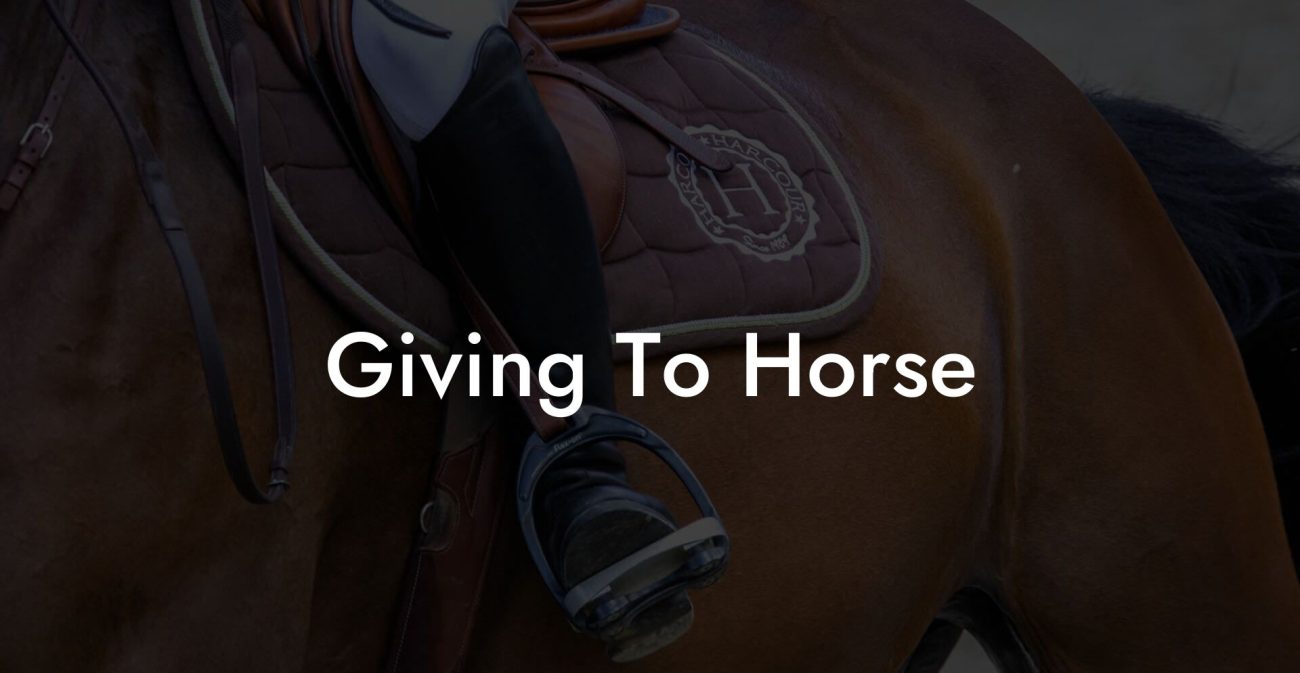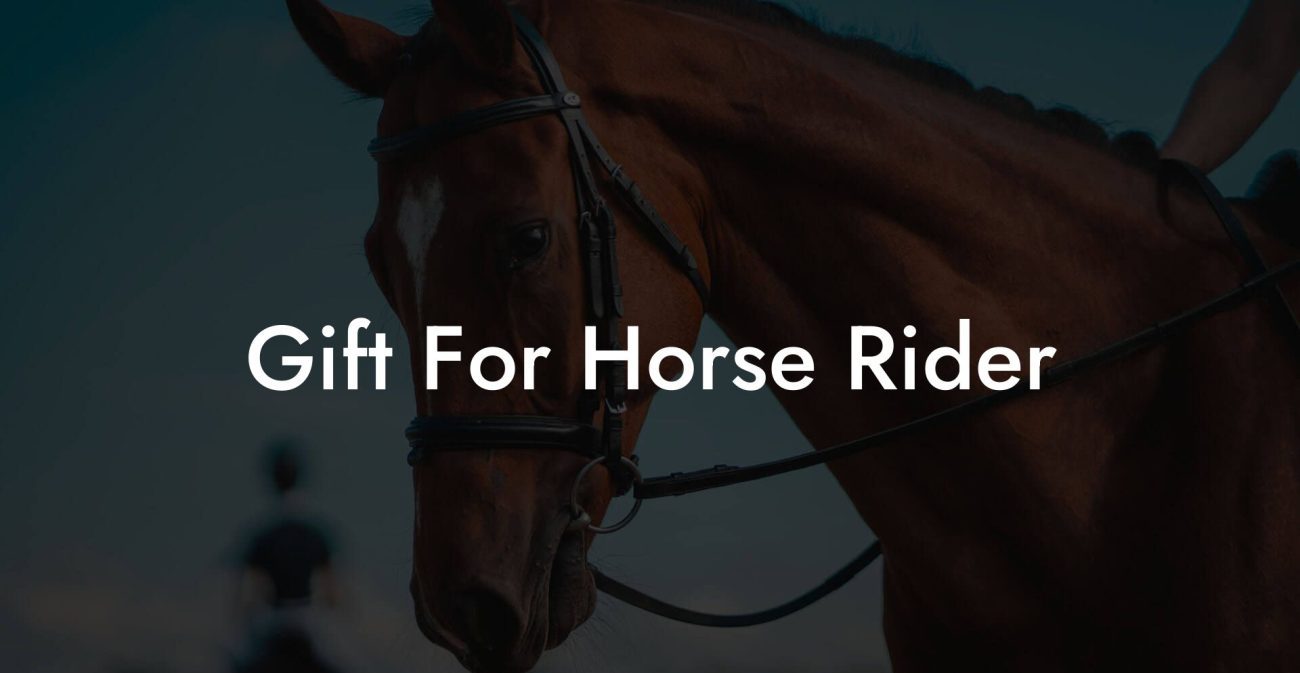Ever wondered if owning a horse comes with a price tag fit for a Hollywood blockbuster? Saddle up, because we’re diving head-first into the wild and often wallet-wrenching world of equine expenses! Whether you’re dreaming of cantering across the countryside or just have a soft spot for four-legged friends, understanding the "Cost Of Keeping A Horse Per Year" is key. Get ready for a no-holds-barred guide that’s equal parts practical advice and cheeky humor – perfect for Gen-Z and millennial horse enthusiasts who aren’t afraid to ask, “How much is this hobby really going to cost me?”
Quick Links to Useful Sections
- The Real Price of Paradise: Understanding Horse Ownership Costs
- Breaking Down The Expenses: Feed, Shelter, and Beyond
- Equine nutrition: More Than Just Hay and Oats
- stable and Shelter: Ensuring a Cozy Home
- Essential equipment: Tack, Grooming, and Beyond
- Veterinary and Farrier Bills: The Healthcare You Can’t Skip
- Routine Veterinary Care
- Farrier Services
- training and Performance: Investing in Your Horse’s Potential
- Professional Training
- Additional Equipment and Supplements
- Insurance, Licensing, and Miscellaneous Expenses
- Equine Insurance
- Licensing and Registration
- Travel and Competition Expenses
- Unexpected and Hidden Costs
- Budgeting for Your Equine Investment: Cost-Saving Tips and Strategies
- Plan Ahead and Build a Contingency Fund
- Shop Around and Negotiate
- DIY When Possible
- Join a Community
- The Hidden Costs: It’s Not Just Hay, Hooves, and Hurdles!
- Seasonal and Weather-Related Expenses
- Specialized Health Treatments and Alternatives
- Insurance Deductibles and Extra Coverage
- Investing in Your Equine’s Health: Routine Care and Emergency Preparedness
- Routine Preventative Measures
- Emergency Preparedness and Crisis Management
- Resources and Community Support: Your Next Steps
- Tech Tools and Apps: Modern Solutions for Classic Challenges
- Budgeting Apps to Manage Equine Expenses
- Digital Health Records
- Community and Social Media Groups
- Myth-Busting: Debunking Common Misconceptions About Horse Costs
- Myth 1: “A Horse is Only Expensive If You’re in a Fancy Stable”
- Myth 2: “DIY Stable Management Always Saves Money”
- Myth 3: “Insurance is a Waste of Money”
- FAQs About the Cost Of Keeping A Horse Per Year
- Your Ride Towards Financially Savvy Horse Ownership
The Real Price of Paradise: Understanding Horse Ownership Costs
Owning a horse isn’t just about Instagram-worthy rides and bonding moments in the pasture. It’s a lifestyle that comes with its own unique price tag. From hay and oats to veterinary surprises that pop up like plot twists in a binge-worthy series, the annual cost of owning a horse can range from moderately expensive to “I need a side hustle” expensive.
When we talk about the cost of keeping a horse per year, we’re not just listing farm bills. We’re breaking down a blend of recurring maintenance, one-time splurges, and those unexpected expenses that can leave your wallet looking as empty as a trough after feeding time. Whether you’re budgeting for basic needs, premium care, or the occasional spa day at the equine salon, it’s all part of the adventure.
Breaking Down The Expenses: Feed, Shelter, and Beyond
Let’s start with the basics: feed, shelter, and other essentials. Think of these as the foundation of your horse’s “five-star” lifestyle. Just like you wouldn’t run on instant noodles alone (okay, maybe sometimes, but not every day), your horse also deserves a balanced diet.
Equine nutrition: More Than Just Hay and Oats
Food is fuel, and in the case of horses, it’s the cornerstone of health and performance. The average horse consumes around 1.5% to 2.5% of its body weight in forage daily. This includes:
- Pasture/Forage: Quality hay or access to pasture is non-negotiable. Depending on your locale and the season, hay costs alone can add up to several thousand dollars a year.
- Grains and Supplements: For high-performance or growing horses, supplements and grain mixes might be necessary to keep them in top shape. Don't be surprised if nutritionists and equine diet experts start popping up in your DMs.
And if you think the cost stops at food, think again – specialized diets, treats, and even organic options for the environmentally conscious equine can drive those expenses even higher.
stable and Shelter: Ensuring a Cozy Home
A horse needs a roof over its head just like you do (or at least a fancy barn does the trick). Boarding fees vary widely depending on the quality of the facility and the services provided:
- Full-Service Boarding: These stables offer daily turnout, feeding, mucking out stalls, and sometimes additional care like grooming. Costs here can range from $300 to over $1,000 a month.
- Partial Board: If you’re up for handling some responsibilities yourself, partial boarding may reduce costs significantly. But remember, DIY isn’t always as cheap as it sounds when you factor in time and effort.
- Pasture Boarding: For those in regions with ample grazing land, pasture boarding can be economical, though you might miss out on some convenience factors provided by full-service stables.
Factor in additional expenses like bedding, utilities, and maintenance of the barn itself, and you’ll see that shelter is a significant slice of the annual expenditure pie.
Essential equipment: Tack, Grooming, and Beyond
A horse’s wardrobe might not need a stylist, but having the right equipment is crucial both for safety and performance. Consider:
- Tack and Saddlery: Saddles, bridles, halters, and grooming kits are initial one-time investments that can cost several hundred to a few thousand dollars. High-quality gear is worth the price for both durability and your horse’s comfort.
- Maintenance and Replacements: Over time, tack wears out and needs replacing. Budgeting for occasional upgrades or repairs is as important as buying the original item.
- Clothing and Accessories: Blankets, fly sheets, and boots (for both you and your horse!) add an extra layer of expense, particularly in climates with harsh weather.
Stunning equipment also boosts your social media cred. Just imagine those stylish posts paired with sleek tack – your followers will be thoroughly impressed (and maybe a tad envious).
Veterinary and Farrier Bills: The Healthcare You Can’t Skip
Just as you visit a doctor for an annual physical, your horse needs regular check-ups. Veterinary care and farrier services (i.e., hoof care specialists) are non-negotiable parts of responsible horse ownership.
Routine Veterinary Care
From vaccinations to deworming and dental work, routine veterinary services ensure that your horse stays in fighting shape. Here are some common costs:
- Annual Check-Ups: Routine visits typically include exams, vaccines, and sometimes a diagnostic workup if needed. Annual veterinary bills can range from $500 to several thousand dollars, depending on the horse’s age and health status.
- Emergency and Specialized Care: Emergencies, unfortunately, are part of the package. An unexpected colic episode or laceration can set you back by hundreds or even thousands in emergency vet bills.
Farrier Services
A horse’s hooves are its foundation, making regular farrier visits a must. Whether it’s trimming or shoeing, these services help prevent lameness and ensure a comfortable ride:
- Regular Trimming: Most horses benefit from hoof trimming every 6-8 weeks. Expect an average bill of $30 to $50 per session.
- Shoeing: If your horse needs shoes, the cost rises significantly. Farrier shoeing services typically range from $80 to $150 per visit, depending on the type of shoes and any additional corrective measures needed.
And let’s be honest, whether your horse sports naturally sleek hooves or custom-forged iron masterpieces, investing in proper hoof care is essential.
training and Performance: Investing in Your Horse’s Potential
For many horse enthusiasts, the relationship with their equine isn’t just about stable life, it’s also about performance. Whether you’re into dressage, jumping, or casual trail riding, training plays a crucial role. But training, like any passion, doesn’t come free.
Professional Training
Hiring a professional trainer can be a game-changer, especially if you’re aiming for competition level. Training fees can vary based on the trainer’s expertise, location, and the number of sessions:
- Private Lessons: Expect to pay anywhere from $40 to $120 per session. Inconsistent training sessions might seem like a flexible option, but steady progress often requires consistent weekly or biweekly sessions.
- Group Clinics: If you’re looking to save a few bucks while still refining your skills, group clinics and workshops are available, though the quality and individual attention may vary.
Additional Equipment and Supplements
To supplement training, many owners invest in additional gear such as custom boots, protective wraps, and training aids. There’s also the growing market of equine nutritional supplements designed to boost performance and recovery.
- Equipment Upgrades: Sometimes what started as a hobby turns into an investment in specialized equipment for competitions. These costs can include everything from custom saddles to high-tech monitoring devices for your horse’s fitness.
- Nutritional Enhancements: Supplements and enhanced diets designed for performance or recovery can add a recurring expense to your annual budget.
Remember, investing in training today might pay off with improved performance, better health, and even a few shiny ribbons to flaunt at your local stable meet.
Insurance, Licensing, and Miscellaneous Expenses
Beyond the day-to-day costs, there are several peripheral but vital expenses associated with horse ownership that can catch the unprepared off guard.
Equine Insurance
Protecting your equine companion with insurance is similar to having a car insurance policy – it offers peace of mind in case of accidents, theft, or sudden health issues. Depending on factors like the horse’s age, breed, and intended use, annual premiums can run anywhere from $400 to over $2,000.
Licensing and Registration
Depending on where you live and how you plan to use your horse, you might need licenses or registrations for shows, competitions, or even for local zoning requirements. While these fees tend to be modest on an annual basis, they’re important for ensuring that you and your horse are on the right side of the law.
Travel and Competition Expenses
For the competitive or adventurous horse-owner, traveling to events, shows, or clinics adds another layer of cost. Think transportation, lodging for both you and your equine, as well as entry fees. These expenses can be particularly steep if you’re chasing those coveted trophies or awards.
Unexpected and Hidden Costs
Every seasoned horse owner will tell you: there’s always an “unexpected cost.” From emergency medical care to last-minute repairs at the stable, these surprise expenses can put a strain on your budget when they hit.
Budgeting for Your Equine Investment: Cost-Saving Tips and Strategies
So, how do you keep all these costs from turning your horse dream into a financial nightmare? With a little creativity, previously hidden spending cuts, and some savvy planning, you can keep your equine care both top-notch and budget-friendly. Here are some actionable tips:
Plan Ahead and Build a Contingency Fund
Much like your favorite budgeting app, start by tracking every expense – from hay invoices to those “oops” vet bills. Establish a contingency fund specifically for your horse. This safety net can mean the difference between a minor crisis and a full-blown financial headache.
Shop Around and Negotiate
Whether it’s negotiating discounted bulk rates for hay or shopping around for competitive insurance quotes, don’t be afraid to advocate for your wallet. Comparing options and asking for price breaks can lead to significant savings over the year.
DIY When Possible
If you’ve got a knack for it, consider taking on certain tasks yourself. From stable maintenance to basic grooming and even learning to do minor first-aid when appropriate, DIY can save you money – just be sure you’re not compromising your horse’s well-being.
Join a Community
Leverage your network of fellow horse owners. Many communities have shared resources, bulk ordering clubs, and even barter arrangements for services like riding lessons or farrier referrals. It’s not just about saving money – it’s about building relationships with people who have been there and can offer insider advice.
With these cost-conscious strategies, you’re not just budgeting; you’re investing wisely in your equine’s future while keeping your bank account in check.
The Hidden Costs: It’s Not Just Hay, Hooves, and Hurdles!
Just when you thought you had it all figured out, remember: there are always those sneaky, little expenses that might not make the front page of your budget spreadsheet. Here’s a look at some of the unexpected costs that can pop up:
Seasonal and Weather-Related Expenses
Depending on your climate, winterizing your stable or keeping your horse cool in the summer can incur extra expenses. Think extra bedding, heated water buckets, or even fans and misters. Nature doesn’t do “off-season”, and neither does your horse’s comfort.
Specialized Health Treatments and Alternatives
Beyond regular vet visits, some owners opt for holistic health practices designed to boost overall equine performance. Acupuncture, physical therapy, or even specialized massage sessions can be beneficial, but they do come with a premium price tag.
Insurance Deductibles and Extra Coverage
While insurance helps mitigate risk, don’t be caught off guard by high deductibles or non-covered services. Regularly reviewing and possibly upgrading your policy might save you money in the long run, but it does add another layer to your annual budgeting puzzle.
Awareness of these hidden expenses ensures that you’re not caught off guard and can adjust your overall budget accordingly. Preparation is key – predict where the surprises might come from, and allocate funds early!
Investing in Your Equine’s Health: Routine Care and Emergency Preparedness
Think of routine care and emergency preparedness as the spinach in your horse’s smoothie – not always the most glamorous part of the mix, but absolutely essential for long-term vitality. Regular check-ups, preventative treatments, and being prepared for emergencies not only improve your horse’s quality of life but can also reduce the severity of future expenses.
Routine Preventative Measures
An ounce of prevention is worth a pound of cure. Regular dental check-ups, deworming, and consistent vaccination schedules not only keep your horse in top shape but also often prevent issues that could escalate into expensive treatments. Keeping detailed health records and working closely with your vet can help you catch minor issues before they turn into major money pits.
Emergency Preparedness and Crisis Management
Even with the best preventative care, emergencies do happen. Creating an emergency fund and having a contingency plan for unexpected incidents such as injuries, colic, or severe illnesses can save you both time and money. Develop a relationship with a trustworthy veterinarian nearby, and even consider taking a basic equine first-aid course, knowledge truly is power (and sometimes money saved!).
Ultimately, investing in both routine and emergency care is a proactive way to ensure that your horse remains healthy and ready to gallop through life without turning fiscal responsibility into a full-time job.
Resources and Community Support: Your Next Steps
Navigating the costs of keeping a horse can feel like trying to solve a Rubik’s Cube blindfolded, but thankfully, you’re not alone. There’s a vibrant community of horse enthusiasts, financial gurus, and wellness advocates ready to share their tips for managing expenses while still giving your horse a life of luxury.
Join local equine clubs, online forums, or social media groups where experienced horse owners swap trade secrets on everything from discounted boarding facilities to DIY stable maintenance hacks. Many communities also organize group purchases, sharing deals on hay, feed, and even horse apparel. These resources not only save you money but also offer a sense of camaraderie in your equine journey.
Additionally, keep an eye on webinars, podcasts, and blogs dedicated exclusively to the cost of horse ownership. From budgeting apps tailored to equine expenses to in-depth guides on insurance, these insights can make your financial planning as breezy as a gallop through an open field.
Your next step? Dive into the community resources, ask questions, share your experiences, and embrace the collective wisdom available. Managing the cost of horse ownership is a team sport – and with the right support, you can ride into financial stability with confidence.
Tech Tools and Apps: Modern Solutions for Classic Challenges
Technology isn’t just for streaming your favorite shows on a lazy Saturday – it’s now a trusted sidekick in the equine world. With an arsenal of apps and digital tools at your fingertips, you can effortlessly track expenses, schedule appointments, and even monitor your horse’s health status in real time.
Budgeting Apps to Manage Equine Expenses
Gone are the days of scribbling notes on sticky paper and losing receipts. Today’s budgeting apps are designed to help you track everything from feed costs to emergency veterinary bills. These apps can categorize your spending and even send alerts when you’re approaching budget limits, ensuring you’re always one step ahead when it comes to financial planning.
Digital Health Records
Keeping digital records of your horse’s health, vaccination dates, and vet visits not only streamlines your routine but also helps maintain a thorough medical history. This can be invaluable during emergencies or when transitioning to a new veterinarian.
Community and Social Media Groups
Modern technology connects you to a global community of horse lovers. Social media groups, online forums, and community apps are treasure troves of practical advice, cost-saving hacks, and motivational success stories that can make even the most daunting expenses feel manageable.
By leveraging these tech tools, you can transform the challenge of managing equine expenses into a well-organized, streamlined process – leaving you more time to enjoy those wonderful, Instagram-worthy horse moments.
Myth-Busting: Debunking Common Misconceptions About Horse Costs
There are plenty of tall tales circulating about the cost of keeping a horse. Let’s set the record straight on a few popular misconceptions:
Myth 1: “A Horse is Only Expensive If You’re in a Fancy Stable”
Fact: While upscale boarding facilities do charge premium rates, there are plenty of cost-effective alternatives available. With a little research and community input, you can find options that offer basic care without burning a hole in your wallet.
Myth 2: “DIY Stable Management Always Saves Money”
Fact: Although doing some tasks yourself can reduce costs, improper management or neglect can lead to bigger expenses down the road. Balance is key, learn what you can handle and know when to bring in professional help.
Myth 3: “Insurance is a Waste of Money”
Fact: Skipping insurance might seem like a money-saver until an emergency hits. A sound insurance policy can prevent unforeseen accidents from turning into financial disasters.
With clear eyes and a realistic budget, you’ll find that owning a horse can be both a fulfilling adventure and a manageable investment – as long as you’re prepared for every twist and turn along the way.
FAQs About the Cost Of Keeping A Horse Per Year
We’ve compiled some of the most pressing questions that keep horse enthusiasts up at night (or at least make them pause before their next budgeting session). Check out these answers to demystify equine expenses once and for all:
1. What is the average annual cost of owning a horse?
The cost can vary widely depending on factors such as boarding type, nutrition, training, and healthcare. On average, horse ownership can range from $3,000 to over $10,000 per year – and that’s just the basics!
2. Which expense takes up the largest portion of the budget?
Typically, boarding and stable fees take the lion’s share of the annual expense, followed by feed and veterinary care. The numbers can fluctuate based on location and individual horse needs.
3. Can I reduce costs by boarding my horse at home?
Yes, if you have the land and resources to provide proper shelter and care, keeping a horse at home can be more cost-effective. However, factor in all maintenance and improvement costs to ensure it’s truly beneficial.
4. How often should I expect to pay for farrier services?
Most horses require farrier visits every 6-8 weeks. Depending on your area, each session can cost between $30 and $150 – so budgeting for regular hoof care is crucial.
5. Are there cost-effective alternatives for veterinary care?
While routine vet care is essential, many communities offer shared resources or group discount programs. Always shop around and consider preventative measures to minimize the need for expensive emergency care.
6. How can technology help me manage the costs of horse ownership?
Digital budgeting tools and management apps can help you track expenses, schedule routine care, and even connect with community groups that provide cost-saving tips. These modern solutions simplify financial planning and help you stay organized.
7. What hidden costs should new horse owners be aware of?
Beyond the obvious expenses, be prepared for seasonal costs, emergency treatments, and upgrades to equipment or facilities that might not be immediately apparent in initial budgets.
8. Is equine insurance really worth it?
Absolutely! While it’s an additional cost, insurance can mitigate the financial impact of unexpected emergencies and serious health issues, providing peace of mind.
9. Are there ways to save money on feed costs?
Yes. Bulk purchases, joining co-ops, and even growing part of your own forage (if you have the space) can help reduce feed expenses.
10. What should I do if unexpected costs jeopardize my budget?
It’s best to have a dedicated contingency fund. Regularly review your budget, adjust as needed, and don’t hesitate to seek advice from experienced owners or financial advisors specializing in equine care.
Your Ride Towards Financially Savvy Horse Ownership
Embarking on the journey of horse ownership is like strapping into the saddle of a roller coaster, thrilling, unpredictable, and a bit expensive. But with the right strategy, a dash of creativity, and the support of a vibrant community, you can conquer the costs and fully enjoy all the remarkable rewards that come with caring for your equine friend.
Every dollar spent is an investment in your horse’s well-being, your personal passion, and, ultimately, your lifestyle. By carefully planning for feed, shelter, healthcare, training, and those sneaky hidden expenses, you’ll ensure that you’re well-prepared to handle the ups and downs of horse ownership. With this comprehensive guide, you’re not only budgeting – you’re crafting a smart financial strategy that empowers you to keep your beloved horse happy and healthy.
So, whether you’re a prospective horse owner just starting to explore this adventurous lifestyle, or a seasoned rider refining your budget, remember: a well-planned equine journey is a journey to freedom, fun, and financial savvy equestrian bliss. Embrace the challenge, harness every tip, and ride on!
Your adventure into the cost of keeping a horse per year isn’t just about balancing expenses, it’s about celebrating the life you share with these magnificent creatures. Get ready to rein in those costs, gallop towards financial stability, and enjoy every moment of that equine magic. Happy riding!

